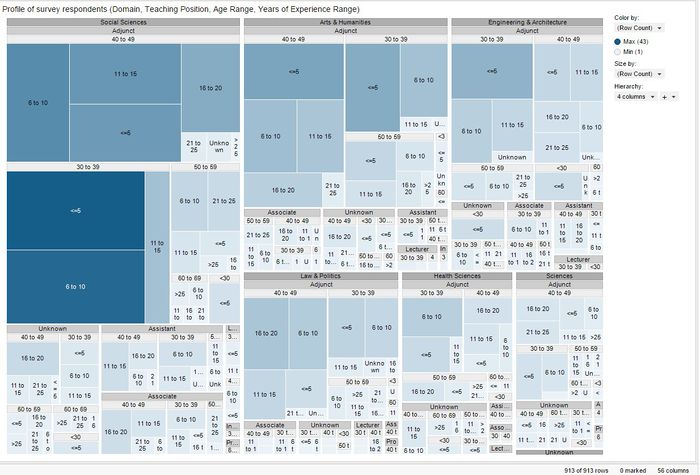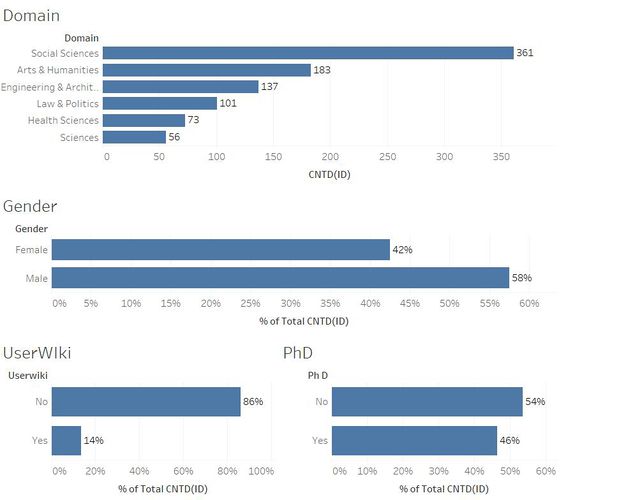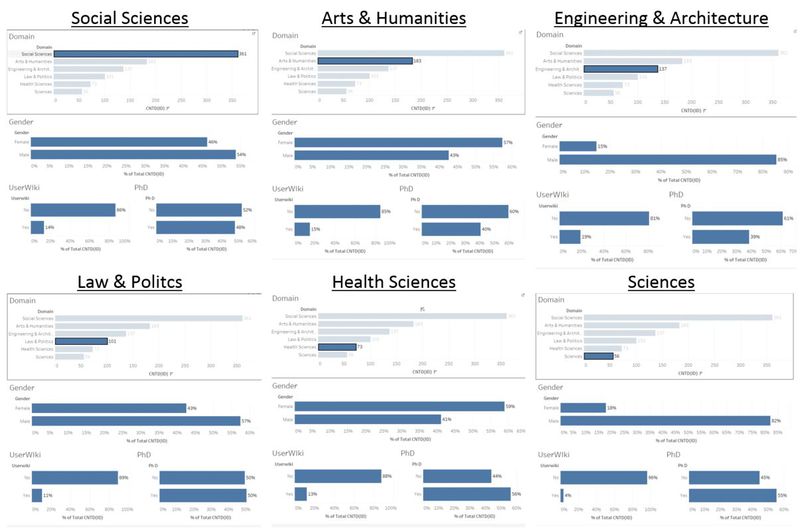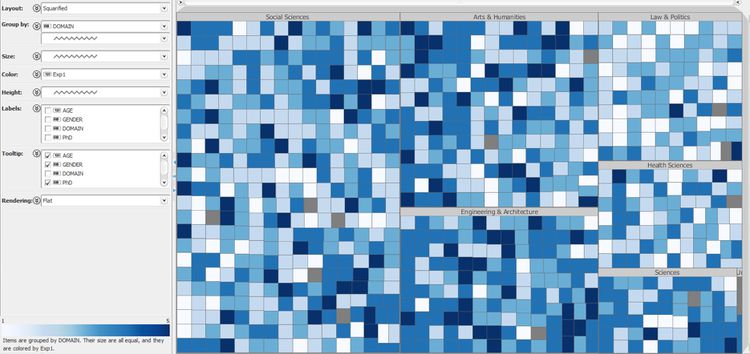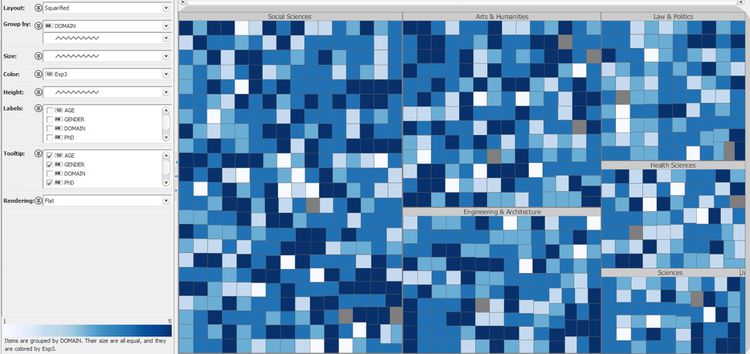ISSS608 2016-17 T1 Assign2 Alvin Yuen
Contents
Abstract
Wikipedia is one of the most common online resource which students rely upon to seek answers for academia and non-academia queries, in this study the attitude of the faculty members from two Spanish Universities, Universitat Oberta de Catalunya (UOC) and UCF were studied to assess the sentiments of the faculty members to the usage of Wikipedia for Higher Learning.
Problem and Motivation
Data Source
The data was obtained from the UCI Machine Learning Repository [[2]], the dataset originated from a research on "Factors that influence the teaching use of Wikipedia in Higher Education" by E. Aibar, J. Lladós, A. Meseguer, J. Minguillón (jminguillona[at]uoc[dot]edu), M. Lerga. Universitat Oberta de Catalunya, Barcelona, Spain.
Data Preparation
Cleaning of Raw Dataset
- The raw dataset contains numeric values for the categorical variables which might not be intuitive when used for analysis, the numbers are coded according to the document provided in UCI, values which could not be classified in the categories provided are coded as unknown. The age of the faculty members and their years of experience are binned into groups, age and years experience are categorised into a defined range.
- Addition columns Question Type and Full Question are added to the dataset to allow for visualization in Tableau.
Transformation of Dataset
An ID was assigned according to the row number of the rows, after which the dataset is stacked using JMP accoding to the survey questions which involves a Likert Scale.
Profile of Survey Respondents
Before reviewing the survey results, we could first take a look at the respondents of the survey. The treemap on the left is constructed based on the hierarchy of Domain, followed by the respondent's teaching position, age range and lastly years of experience.
- As can be observed, most of the faculty members were from Social Sciences, followed by Arts & Humanities, Engineering & Architecture, Law & Politics, Health Science and Sciences
- Adjunct Professor is the most common teaching position amongst all faculties
- The common age range of the respondents are in the 30 to 49 years old range
- Overall the majority of the respondents are non-Wikipedia registered user (86%), the non-Wikipedia registered user is constantly over 80% for all domain types.
- The overall male and female distribution is at quite an equal distribution of 58% male and 42% female, this is true for most domains, except for Engineering & Architecture and Sciences where the majority of the respondents are male, 85% for Engineering & Architecture and 82% for Sciences.
- There is quite an equal distribution of PhD holders and non-PhD holders at 54% (non-PhD) vs 46% (PhD), the distribution is quite consistent for all domains except for Engineering & Architecture (61% non-PhD and 39% PhD) and Arts & Humanities (60% non-PhD and 40% PhD)
Survey Results
Likert Scale Survey Questions

- The divergent stacked bar chart allow quick visualization of the different responses which the respondents have towards each question. The filter on the right includes domain, question type, age range, the years of experience, and teaching position. The dashboard helps in providing understanding of the respondents' sentiments based on the topic of interest, for example I may be concern with the experience of the respondents with Wikipedia and their use behaviour of Wikipedia, I would then proceed to filter out these questions using the Question Type filter bar to review the responses.
What is the adoption status of Wikipedia of the respondents like?
- Before trying to understand the factors which would influence the usage of Wikipedia in Higher Learning for the respondents, we could first understand the Wikipedia adoption status of the faculty members. The chart on the left shows the response of all the faculty members in terms of their past use behaviour and personal experiences with Wikipedia.
- Based on the responses of the faculty members to the questions on Experience, it can be inferred that they are not really relying on Wikipedia extensively for teaching in school. From the replies to question Exp5, it can observed that 55% of the respondents rarely or never use Wikipedia to work with their students and only about 28% of the respondents used Wikipedia sometimes (19%) and always (9%) to work with their students. In addition, the response of the faculty members to question Use1 and Use2 is overwhelmingly low for developing their teaching materials (67% responded to have never or rarely utilised Wikipedia for teaching materials) and as a platform for development of educational activities with students (51% responded to have never and 24% responded as to rarely).
- In fact, the faculty themselves are not regular contributors to Wikipedia, as can be seen in question Exp4, where 64% of the faculty members never contributed to Wikipedia and 20% rarely contribute to it, only about 6% of the faculty members would sometimes or always contribute to Wikipedia.
- However, this does not mean that the faculty members has a lack of personal experiences or trust in Wikipedia materials. As they do consult Wikipedia for academic related issues, about 53% responded that they sometimes (36%) or always (17%) consult Wikipedia for academic related issues. The figure is slightly higher for the use of Wikipedia for consultation of personal issues, about 61% responded that they sometimes (38%) and always (23%) consult Wikipedia for personal issues.
- They do not show signs of disagreement on the usage of Wikipedia by the students for their courses, only about 23% show signs of disagreement according to question Use5, while most of the faculty members are either neutral (32%) or accepting of it (45%).
What about the adoption status based on Teaching Domain?
The colour intensity move from white to dark blue as ratings changes from strongly disagree/never to strongly agree/always
